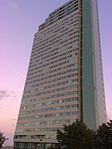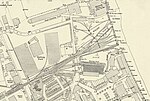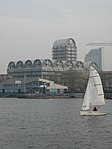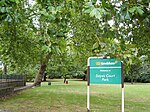Evelyn (ward)

Evelyn is an electoral ward in the northernmost part of the London Borough of Lewisham. It covers the northern part of Deptford on the south bank of the River Thames, and is the only Lewisham ward that borders the river. Occupying the northern corner of the London Borough of Lewisham, the Evelyn ward borders only one other Lewisham ward, which is New Cross to the south. But Evelyn borders wards from three other London Boroughs, Greenwich West in the Royal Borough of Greenwich to the east, Surrey Docks of the London Borough of Southwark to the northwest, and across the River Thames on the Isle of Dogs, the Millwall ward from the London Borough of Tower Hamlets.
Excerpt from the Wikipedia article Evelyn (ward) (License: CC BY-SA 3.0, Authors, Images).Evelyn (ward)
Timberyard Street, London New Cross (London Borough of Lewisham)
Geographical coordinates (GPS) Address Nearby Places Show on map
Geographical coordinates (GPS)
| Latitude | Longitude |
|---|---|
| N 51.487 ° | E -0.0352 ° |
Address
Meranti Apartments
Timberyard Street 2
SE8 3JZ London, New Cross (London Borough of Lewisham)
England, United Kingdom
Open on Google Maps









